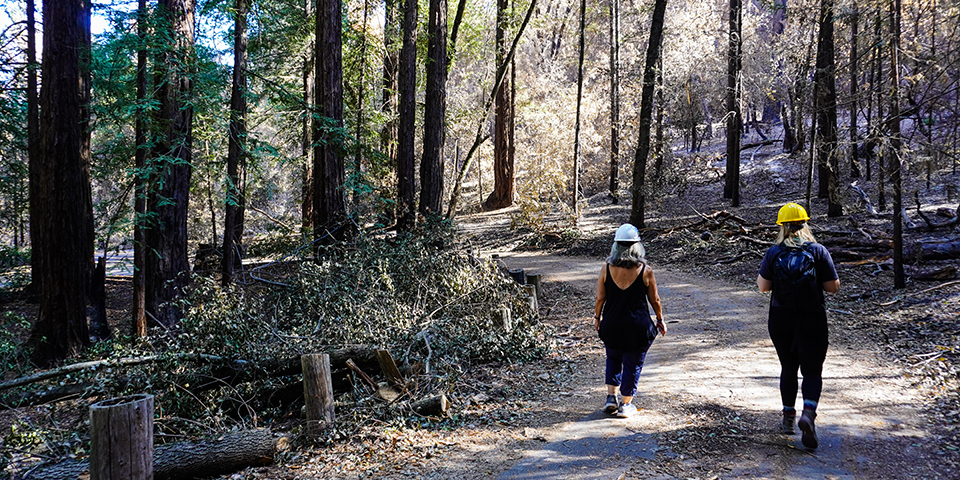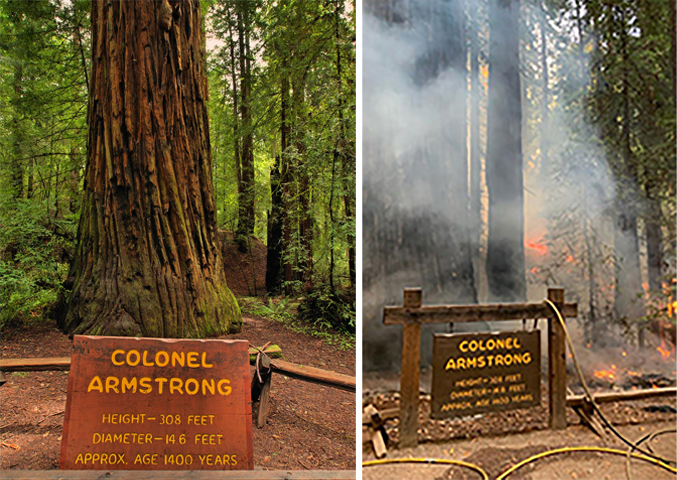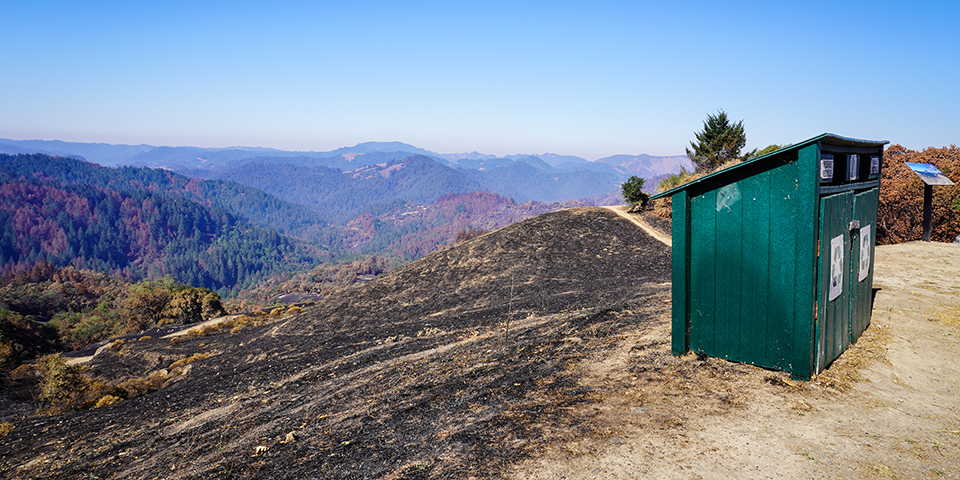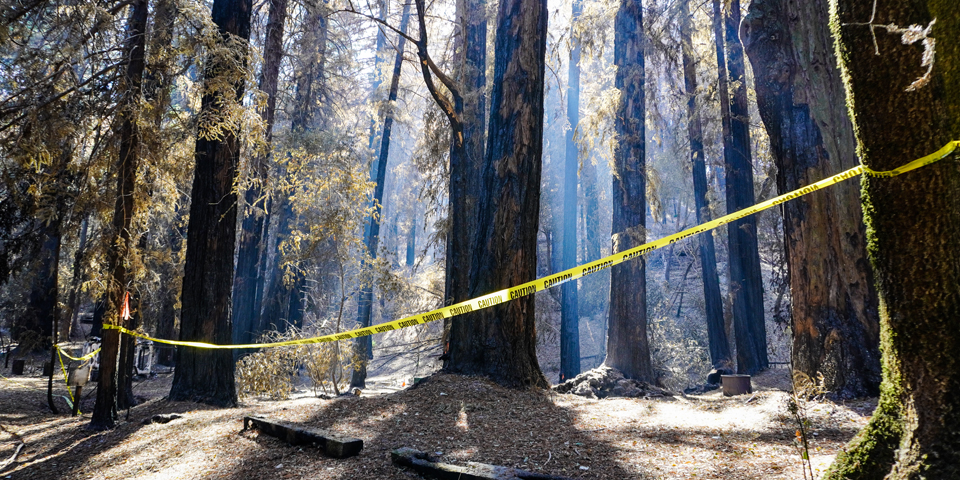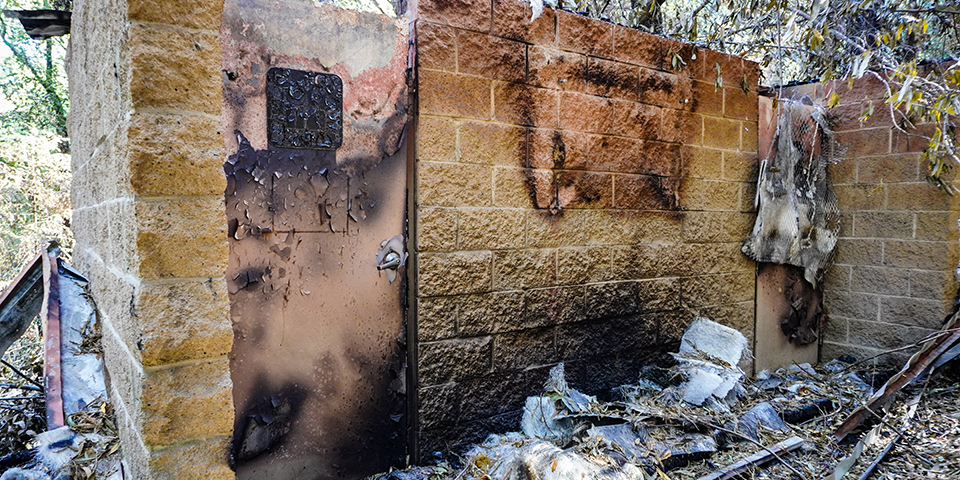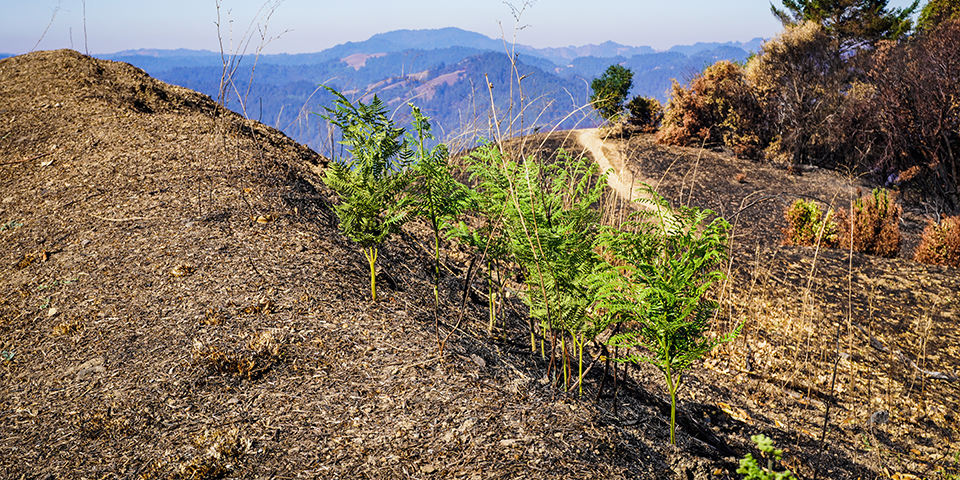Wildfires have become all too familiar for California and for California state parks.
Just a few years ago, in October 2017 Sugarloaf Ridge State Park was impacted by the Tubbs Fire. A year later, in November 2018 Malibu Creek State Park and Leo Carrillo State Park were damaged by the Woolsey Fire. There have been many wildfires before these, and many that have come after on state parklands.
This year was no different, Big Basin Redwoods State Park, Austin Creek State Recreation Area, Armstrong Redwoods State Natural Reserve, Trione-Annadel State Park, and Sugarloaf Ridge State Park were threatened once again. These are just a handful among the full list of California state parks impact by wildfires, see the full list here.
On October 4, a few California State Parks Foundation staff were fortunate enough to visit Austin Creek State Recreation Area and Armstrong Redwoods State Natural Reserve for a tour by Michele Luna, Executive Director of Stewards of the Coast and Redwoods.
Stewards of the Coast and Redwoods is a non-profit environmental and interpretive organization that works in partnership with California State Parks in the Russian River District to support volunteer, education, and stewardship programs. After the passing of AB42 in 2011, Stewards of the Coast and Redwoods stepped up and entered into an operating agreement with California State Parks to keep Austin Creek State Recreation Area open in 2012. They are one of five cooperating associations operating a state park across the state after the passage of AB42.
It is eerie entering the park, completely empty and not bustling with the usual crowds of visitors exploring the redwoods, picnicking with family, or going into the visitors’ center. This is a very special place, and you know it right when you enter.
We start in Armstrong Redwoods State Natural Reserve. You can still smell the fire as it lingers in the air. Armstrong Redwoods State Natural Reserve started burning on the forest floor on the afternoon of August 24. We first make our way to see the Colonel Armstrong Tree. The Colonel Armstrong Tree is the oldest tree in the grove, estimated to be over 1,400 years old. The tree narrowly escaped the fire, with flames coming within a short distance of the base. The hillside right behind the tree is full of burned trees. The fire slowly burned through the grove and did not affect structures or iconic trees.
As we go through the rest of Armstrong Redwoods State Natural Reserve, you can see the hills on each side of the grove are burned. The large and beautiful open area of picnic tables was untouched by the wildfire, and it is comforting to know that this spaces for friends and family to gather will be ready to go when the park is ready to open. Much of the wood from fallen trees has been cut up and sits in piles throughout the park, to be sold or used as campfire wood in the future.
If you didn’t know, Austin Creek State Recreation Area is accessed through the same entrance as Armstrong Redwoods State Natural Reserve. After viewing the damage and saved areas of Armstrong Redwoods State Natural Reserve, we head up the hill on the narrow and winding road up to Austin Creek State Recreation Area, and specifically the Bullfrog Pond Campground.
The hillsides of Austin Creek State Recreation Area are visibly burned as far as you can see. Some areas are completely bare, while others are a patchwork from where the fire has jumped through the forest.
The greatest destruction was throughout the Bullfrog Pond Campground. The first thing we notice is the destruction of most of the signage, melted down so the words and symbols are no longer legible. A few of the park trailers are completely burned and are just a shell of the former shape. One of the restrooms in the campground is completely gone, and still being assessed to understand the extent of the damage. The restroom will be one of the biggest lifts to reopen the park and have it ready for visitors. The ground around the campground is full of downed trees that will need to be cut and removed. The team at the park has been hard at work on the initial projects but is still evaluating what the priorities and needs are.
If there is one thing we do know, it is that parks are resilient. And the non-profits that support them will be there to protect and preserve them as they face challenges. What is even more powerful is that we are able to pull together non-profits, cooperating associations, and park staff, getting the very best in expertise and dedication. These parks, and parks across California, will recover because the parks community is strong now, and for the future.
A big thank you to California State Parks, CalFire, and local firefighters that worked together to make the best possible decisions with respect to managing the fire for the park and the local community.
